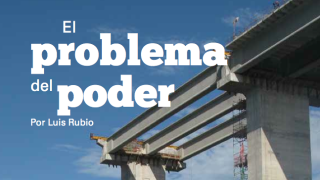Viewing the Past
The “Hoy No Circula” program began on November 20, 1989 during a similar situation to the one we are now in, characterized by high concentrations of pollution. During the eighties, the air quality in Mexico City (CDMX) was so poor that breathing the air for a day was tantamount to smoking two packs of cigarettes. Only in 1989 was there a recording of more than 250 days above the standard concentration of ozone levels in the environment. However, despite the implementation of the “Hoy No Circula” air pollution in the city failed to fall. According to research by Lucas Davis of the University of Chicago, after applying the policy, air quality actually declined at weekends. In addition, it failed to increase the percentage of trips made by public transport because, largely, drivers prefered quicker and safer ways to travel than those offered by public transport in CDMX. What one saw was a notable increase in the proportion of used fleet vehicles, ie the most polluting. [1] Thus, it is questionable whether this measure should be implemented as it is not the first time that it has been applied and the results have been proven to be counterproductive. [2]
Disjointed Public Policy
For some years, the government of CDMX has been characterized by public policies promoting mobility, while objectives and approaches have been confused and contradictory. The short-term priority policies such as subsidies to vehicle tax, which are profitable in electoral terms, have generated an incentive scheme that is disjointed and inefficient in improving both mobility of citizens and environmental well-being. The matter of vehicle tax is particularly interesting; on one hand, the intention of this tax is to raise the costs of acquiring a vehicle, consequently slowing the increase in the number of cars in the city. However, the purpose of this tax has been undermined by the adoption of measures contrary to it. Since 2011, in some states of the metropolitan area, the government’s car subsidy program has funded the total cost of the vehicle tax during the first three months of the year. In the case of CDMX , this subsidy applies to vehicles worth up to 250 thousand pesos without debt, while in the State of Mexico endorsement is for vehicles between 100,000 to 350,000 pesos. As Table 1 shows, unlike the vehicle tax – the cost of which depends on the total value of the vehicle – the subsidy in CDMX is constant for all cars, and therefore acts as an incentive to purchase a particular vehicle.
On the other hand, since 2001, with the creation of the Fund for the Improvement of Roads in the Federal District (FIMEVIC by its acronym in Spanish), Mexico City began an infrastructure agenda particularly focused on adding second levels to major thoroughfare avenues. Originally, the creation of these seond levels was intended to expand road capacity and reduce the saturation of vehicles on the main roads of the city, thus resulting in reducing emissions. [3] However, these interventions have contributed to increased numbers of cars by reducing transfer times for private vehicles, making it more attractive for people to opt for a private rather than a public or collective transport method. To this should be added the insecurity and quality service problems of the city’s public transport. Furthermore, emissions have not been impacted positively – in 2002 the maximum concentration of carbon monoxide measured by parts per million (ppm) was about 6, while in 2014 the level had increased to a maximum of 7.5 ppm. [4]
Beyond Pollution
High vehicular traffic and pollution are historical rivals in the Valley of Mexico. This is not only an environmental dilemma but also affects the productivity of the region and the welfare of citizens. [5 ] The severity of these problems is higher than those observed in similar cities. According to the most recent IBM study, conducted in the 20 largest cities in the world, CDMX stands in first place for discomfort caused by transportation between home and work. [6 ] In this way, CDMX surpasses cities like Beijing, New Delhi and Moscow. Saturation of transport, especially in “peak hours”, low maintenance of public vehicles, and long travel times ensure that the public transport system of the city is an unattractive alternative means of transport.
The economic costs that result from this problem are not small. The maximum average time that the inhabitants of CDMX spend in traffic is two hours a day, and this affects the productivity of the population. [7 ] For example, 56% of motorists in CDMX reported that they were affected in their work or school performance because of the traffic. 42% cancelled a business trip for the same reason. Additionally, a quarter of inhabitants mentioned that if traffic was reduced significantly, they would choose to work longer hours, as can be seen in Figure 1. Therefore, if mobility problems were met, growth and economic development of the city may increase due to increased labor productivity.
In addition to this, traffic congestion has resulted in economic losses due to the reduction of man hours and increasing costs of moving goods. In the Valley of Mexico alone, the economic cost of traffic congestion accounted for about 82.2 billion pesos in 2010, ie a little over 4,000 pesos on average per inhabitant of the Metropolitan Zone of the Valley of Mexico (ZMVM by its acronym in Spanish), [8 ] including pollution and accident costs. Also, the problem is intensified due to high long-distance commuting, since 22.5 % of the inhabitants of the State of Mexico work in other federal entities, though there is no public transport infrastructure of quality to connect this region with workplaces in CDMX. [9 ]
From 1992 to 2012, the population of the ZMVM increased by 25%, while the number of vehicles rose by 150%, from 2 million to 5 million vehicles [10 ]. 78% of the units are private transport, which have a very high fuel consumption per kilometer and thus contribute to environmental problems. Car use becomes almost the only quick and safe alternative to reach business centers such as Santa Fe, which are not yet connected with mass transport networks like the Metro or Metrobus. This region has a total of 7,000 homes, with capacity for 35,000 permanent inhabitants. However, Santa Fe receives around 135 thousand people daily, who travel to work and school in the area [11 ].
Conclusion
In reality, the discussion of “Hoy No Circula” has little to do with the colour of the car’s markings or forced inactivity once a week. The implementation of this measure demonstrates how sustainable development, mobility and improvement of public transport have not been a political priority for the governing body of the city. For decades, governments have preferred that the capital benefits from an increase of private vehicles, and have privileged reactive and short-term measures to address environmental costs despite negative affects to productivity and citizen welfare. Also, rulers have chosen to ignore alternative measures that have had positive results in countries such as Brazil, where during the nineties, they began to use part of the proceeds of tax on fossil fuels to create a network of quality public transport which reduced pollution of large cities.
While the political incentives of the rulers of CDMX and neighboring states do not align with better public policies, we can hardly expect an improvement of urban mobility. Why not take advantage of the situation to set rates for those motorists who want to move on certain days and hours in the most congested areas of the city and use that revenue to improve public transportation? Why not increase car use through tax collection mechanisms such as the installation of parking meters, rather than just look to restrict circulation through the color of a stamp? Perhaps the positive side of “Hoy No Circula” is that it could mobilize groups to demand greater accountability on this issue and to propose alternatives that go beyond solely limiting the use of cars.
Authors: Carlos De la Rosa, Ximena López, Mireya Moreno, Jorge Ramírez y Rafael Vega
Coordinator: Mariana Meza
Editor: Patricio Toussaint
[1 ] Davis , 2008. The Effect of Driving Restrictions on Air Quality in Mexico City. The University of Chicago. Lucas W. Davis. Presented in the Journal of Political Economy , 2008 , vol . 116 , no. 1
[2 ] As for mobility policies, whether they have seen progress in the implementation of measures to reduce car use by more energy-efficient options. For example, the introduction of the Metrobus and the system of public bike rentals. However, its scope is still limited to a restricted area of the Metropolitan Area of Mexico.
[3] FIMEVIC. “Measures to improve the mobility of people and goods in Mexico City”: http://www.fimevic.df.gob.mx/
[4 ] Annual reports of air quality in the city: http://www.aire.df.gob.mx/
[5 ] The levels of breathable particles and ozone were associated with 4,000 premature deaths in 2005, according to the National Institute of Ecology .
[6 ] IBM, 2011 IBM Commuter Pain Index 2011
IBM index measures 27 dimensions such as travel time between home and work , the quality of infrastructure in the road or fuel prices.
[7] IBM, 2010. IBM Commuter Pain Index 2010.
[8] ITDP, 2010. The importance of reducing car use in Mexico. Trends in motor and car use. October 2012. Salvador Medina Ramírez.
[9] INEGI, 2015. Intercensal SUrvey 2015. Instituto Nacional de Estadística y Geografía (INEGI).
[10] Annual reports of air quality in the city: http://www.aire.df.gob.mx/
78% of these vehicles are private vehicles.
[11] CTS , 2015. Mobility study of the Santa Fe area of Mexico City. CTS EMBARQ. 2015.




Comments